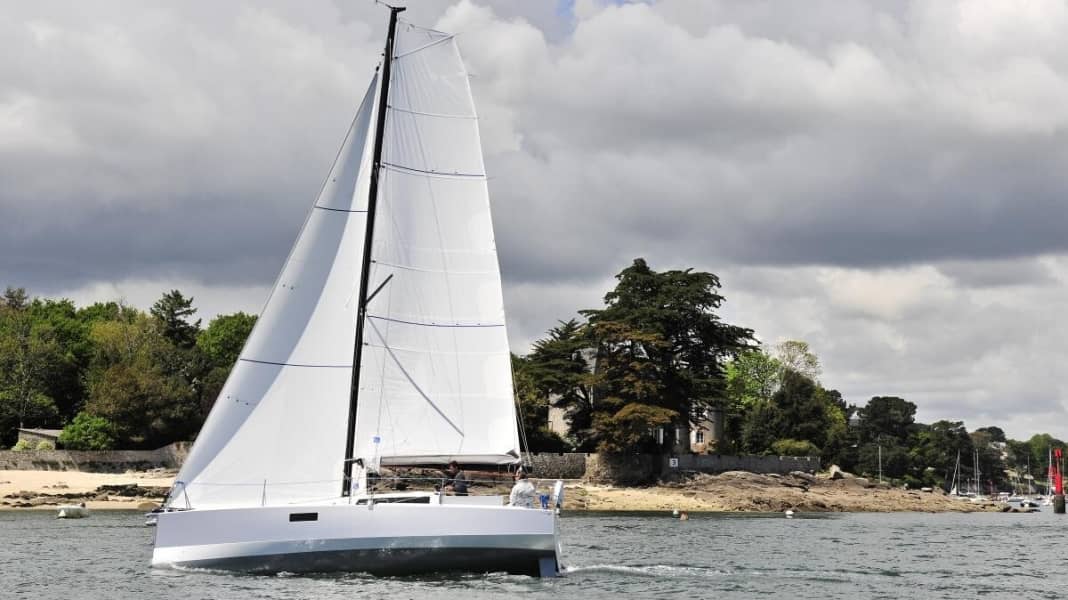
She has not really lacked in performance. With a sail carrying capacity of 5.5, the smallest and best-selling yacht in Pogo's cruising programme has offered plenty of potential since its debut five years ago. For comparison: normal tourers have a value between 4.0 and 4.5.
But in future, owners of the lightweight but very wide nine-metre yacht will be able to order even more power. Pogo Structures is now offering a new carbon fibre mast for the Pogo 30 with the suffix "Evo". It is 65 centimetres higher than the previous carbon fibre version and therefore offers even more sail area than before - 68.1 square metres in total with a squarehead size. That is a third more than in the standard configuration with aluminium rig and conventional main (51 square metres).
This increases the sail load factor to 5.7, which should improve the light wind characteristics in particular. These were already respectable before, but could still be optimised, because with a width of 3.70 metres and a relatively large wetted surface, the Pogo 30 struggled a little under 7 knots of wind speed. The Evo rig made of carbon fibre costs 11,000 euros extra - surprisingly little for so much more speed.






The modified rudder blades should also have a performance-enhancing effect. They are now deeper but slimmer and should also improve the somewhat indifferent feeling that the previous appendages conveyed.
The Breton shipyard has also worked on comfort. Additional storage compartments, a more usable galley with a two-burner, gimbal-mounted gas hob and a less puritanical wet room are among the options. Even a fixed door made of foam sandwich is available on request (surcharge: 470 euros); until now, a film with a zip was the most privacy available.
This makes the Pogo 30 even better suited to the demands of a fast cruising boat and follows the course of its younger and larger sister, the Pogo 36. Both were nominated for European Yacht of the Year, but only the Pogo 36 won the coveted title last year.
